By: Harpreet Malla, M.A.
Typically when I see that mental health is featured in film, I have mixed reactions. On one hand, the more mental illness and its existence is talked about or addressed, the better. Stigma, or the negative perceptions and misconceptions we have, are primarily broken down by contact with the thing about which we know so little. On the other hand, when portrayals of the mentally ill are poorly done, they can feed into our existing stereotypes and imbue people with fear or disgust rather than compassion. I can think of many films in which an actress has had a near-melodramatic meltdown in an Oscar bid amid characters that are portrayed unidimensionally as either the antagonists who “elicit” the mental illness or are the supportive, silent sufferer types. This month, however, I was delighted to see not one but two excellent films featuring characters dealing with mental illnesses.
The first is Signe Baumane’s independent, animated feature Rocks in my Pockets, which she affectionately calls “a funny film about depression.” The highlight of Baumane’s work is how deeply personal she gets, interweaving a tale of depression that spans generations and focuses heavily on culture and femininity. Her story centers around 5 female protagonists within her family, and through a self-described stream of consciousness she explores how each character dealt with hardships, real or imagined, and how “madness” displayed itself in their lives. The narration is done in Baumane’s Latvian accent and is accentuated by sometimes whimsical, sometimes surreal animation. For example, when we see the protagonist visit a psychiatrist the doctor slices her head open, fumbles for her brain, and neatly places it back in her head with a Band-Aid before sending her off with a bottle of pills. The medication, in Baumane’s experience, was unhelpful as it did not target specific symptoms and her character is seen with a frog’s head sticking its long tongue out and picking up pills like little flies.
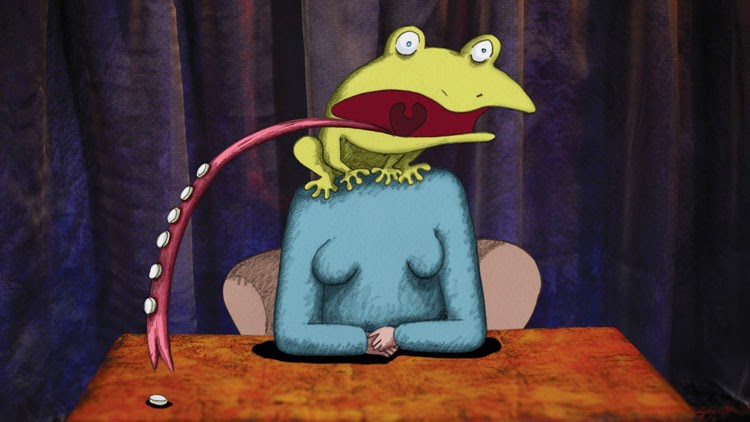
What is so refreshing about getting this unique perspective about dealing with mental illness is that it is unapologetic. We get the story according to Signe, and she does not pander to a “normal” crowd or ensure that her level of humor remains acceptably dark. She begins by telling the tale of her overworked grandmother Anna who tries to drown herself in a suicide attempt. She is found by a passerby who remarks on her stupidity for not having the eponymous rocks in her pocket to complete the job. Several more stories unfold, one with Baumane’s cousin Linda as the centerpiece. Linda is described as a beautiful, well-educated girl set to escape the poverty and lack of opportunity faced by her ancestors, but ironically craves the quiet, simple married life she had been denied. Baumane, conversely, fights to break free of her husband and child to pursue the creative dreams that she has longed to explore (and in this film, has successfully and artfully done.) The nagging words of Baumane’s mother act as a motif that pervade each character’s story: “What will the others think?”
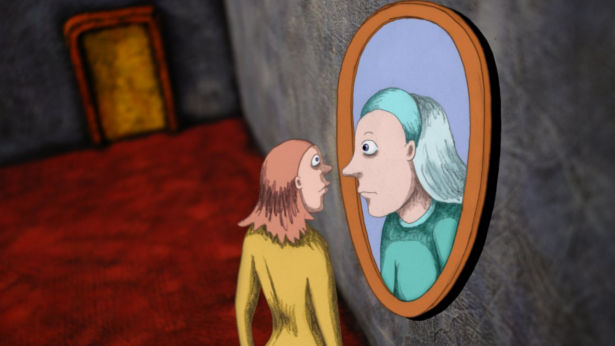
The fear of disappointing others or not living up to some universal standard keeps each character in shackles, and prevents them from believing they can find their true happiness. As a first-generation Indian woman, this theme is one which I definitely identify with but I also believe it is universally relatable. Not all of the dark thoughts or feelings in Baumane’s film are relatable, though, and seeing her family’s journey through her eyes exposes the struggle that mental illness is and how pervasive and overwhelming it can be. It provides us with a better understanding of what mental illness is, how it affects individuals across generations, and what it’s like to cope with on a daily basis. The film closes with Baumane citing the creative outlets and social supports she uses to cope, likening them to the “rocks” in her pockets that help her along her path, a different one than her grandmother Anna’s. I could go on about this film forever, but I have one more movie to get to so instead I strongly encourage you to explore it for yourself—a listing of screenings and more information is available at http://www.rocksinmypocketsmovie.com

The Skeleton Twins, written by Mark Heyman and Craig Johnson and starring Saturday Night Live veterans Kristen Wiig and Bill Hader, is a perfectly-balanced, live action dark comedy about twins Maggie and Milo who re-connect after a decade-long hiatus because of Milo’s failed suicide attempt. Incidentally, Maggie, a dental hygienist, is about to swallow a bottle of pills in a suicide attempt of her own when she receives the call from the hospital. She dutifully offers her gay, aspiring actor brother to relocate from L.A. to New York to stay with her and her upbeat husband Lance. He accepts, and we learn more about Maggie and Milo’s lives, their histories, and their psychological wounds as the movie progresses.
Maggie and Milo are scarred by their father’s legacy of suicide, which left them with their apathetic, pseudo-spiritual mother at age 15. They discuss their therapist’s incessant prompts to journal over drinks and in drag on Halloween, acknowledging that she (the therapist) did the best she could with two traumatized teens. As time goes on, Maggie and Milo reveal their matching skeleton tattoos and the proverbial skeletons in their closets to each other. Their lives are still far from perfect, and neither of them seems like they are in any position to handle it. Maggie is unsure how to break it to her sweet, apologetic husband that she doesn’t want kids and finds comfort away from home in a series of classes spanning from cooking to scuba diving. Milo is devastated to see that his high school bullies are better off than him, contrary to his father’s prediction that they would “peak in high school,” and rekindles an old flame with a closeted ex-teacher who repeatedly proves himself to be emotionally unavailable.
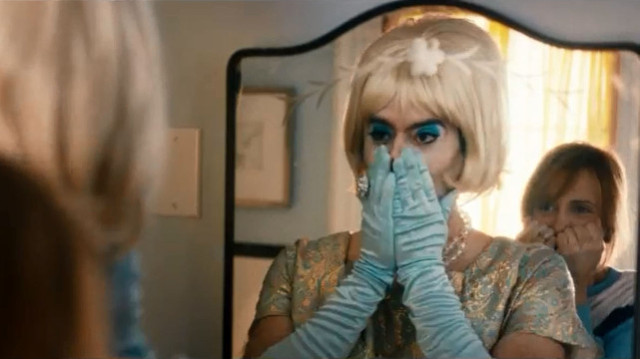
The tense, difficult moments in The Skeleton Twins are interspersed with the natural highs Maggie and Milo share in order to deal with their difficult situations. Particularly memorable for me, perhaps because of my penchant for 80s music, is a scene in which Milo cheers Maggie up by lip-syncing to Starship’s “Nothing’s Gonna Stop Us Now” with enviable enthusiasm and talent. Another scene lightens up several deep disclosures when Maggie gives Milo a dental cleaning with just a touch too much laughing gas and the pair end up in hysterics with headgear taped onto their heads. To me, this showcases the way in which people with depression, as well as all people, cope—by finding even the smallest bit of positivity and hope in unlikely places. Their resiliency is showcased as Maggie and Milo take turns supporting and saving one another, but again, I won’t give too much away. Instead, I encourage you to watch the trailer and look up showtimes at http://skeletontwinsmovie.com/
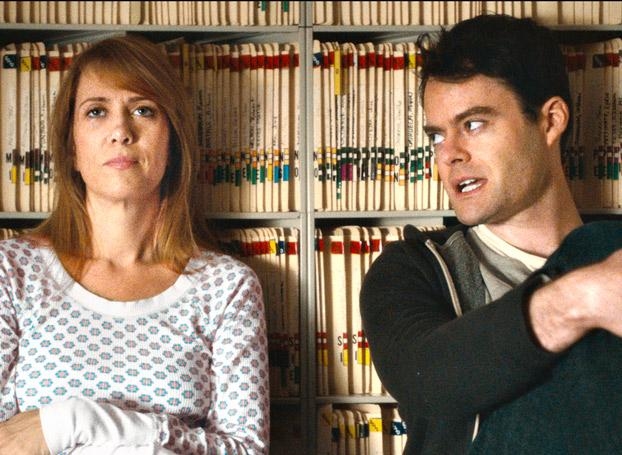
I’d love to hear your thoughts on either of these excellent films, or other portrayals of psychology-related matter, so feel free to e-mail me at harpreet.malla@gmail.com to discuss!
~Harpreet Malla
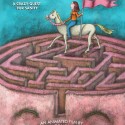
These movies were bad ass! Low key and not talked about enough. But excellent films! You’re discussion and examinations are spot on. Very well done and informed article. Kudos to the author!
Great review of Rocks in My Pockets! I do agree with what you said about talking about the existence of depression and mental illness, or helps people understanding and that they are not alone. It was so much fun seeing with you!
I love this, and now I want to see both these films even more! I know exactly what you mean about Oscar-bid melodramatic portrayals of mental illness furthering stereotypes and being all too obvious. I might have been the only one who felt that way about Silver Linings Playbook, but yeah, I did. These two films you’re talking about sound like a reprieve though. Thanks for the interesting analysis/previews!
Intimate, sincere, and uncompromising. Rocks in My Pocket truly is a revealing and, most of all, moving odyssey through generations of depression. Your analysis of the film, Harpreet, is both wonderfully written and highly enlightening.